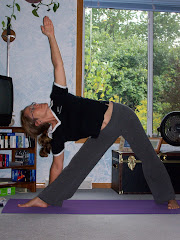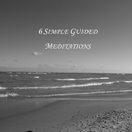What is it to live a "whole life?" Gail Straub suggests in her book, The Rhythm of Compassion, to see balance as the inhale and exhale of every breath: "I've come to think of [the] relationship between soul and society much like following the in-breath and the out-breath, as in meditation practice. There's a natural time for the in-breath of caring for self and family, and a natural time for the out-breath of caring for the needs of the world. The challenge is to become skillful in following our rhythm--knowing when it's time to go inward and when to go out into the community." (Page1.)
Wholeness is found when we reflect and nourish within while balancing that with giving and taking action. A full life is all about balance, and yoga is a tool that can be utilized to find this state of harmony.
A yoga sequence can be customized around the ideas of balance or wholeness. Ideally any yoga class adheres to the guidelines of bringing equanimity and fullness to life, but a focus on twists uncovers imbalances rather quickly. Whereas a whole body practice, sarvanga sadhana, involves all parts of the body including the internal organs. The Viniyoga tradition advices such a complete sequence at least once every 20 days. I find this guideline useful in avoiding burn-out from spending so much time with the poses. It enables you to have a specific focus during the week, while still checking in with the entire system periodically. This is a wonderful way to catch something before it gets out of hand and to maintain the body as a whole.
The body and mind are inseparable. So this endeavor may appear on the surface as strictly physical; when in reality working with the body and the breath directly impacts the mind and thus our lives.
Love Much,
Kris
www.TotalHealthYoga.com
Today is the first day of the rest of your life!





